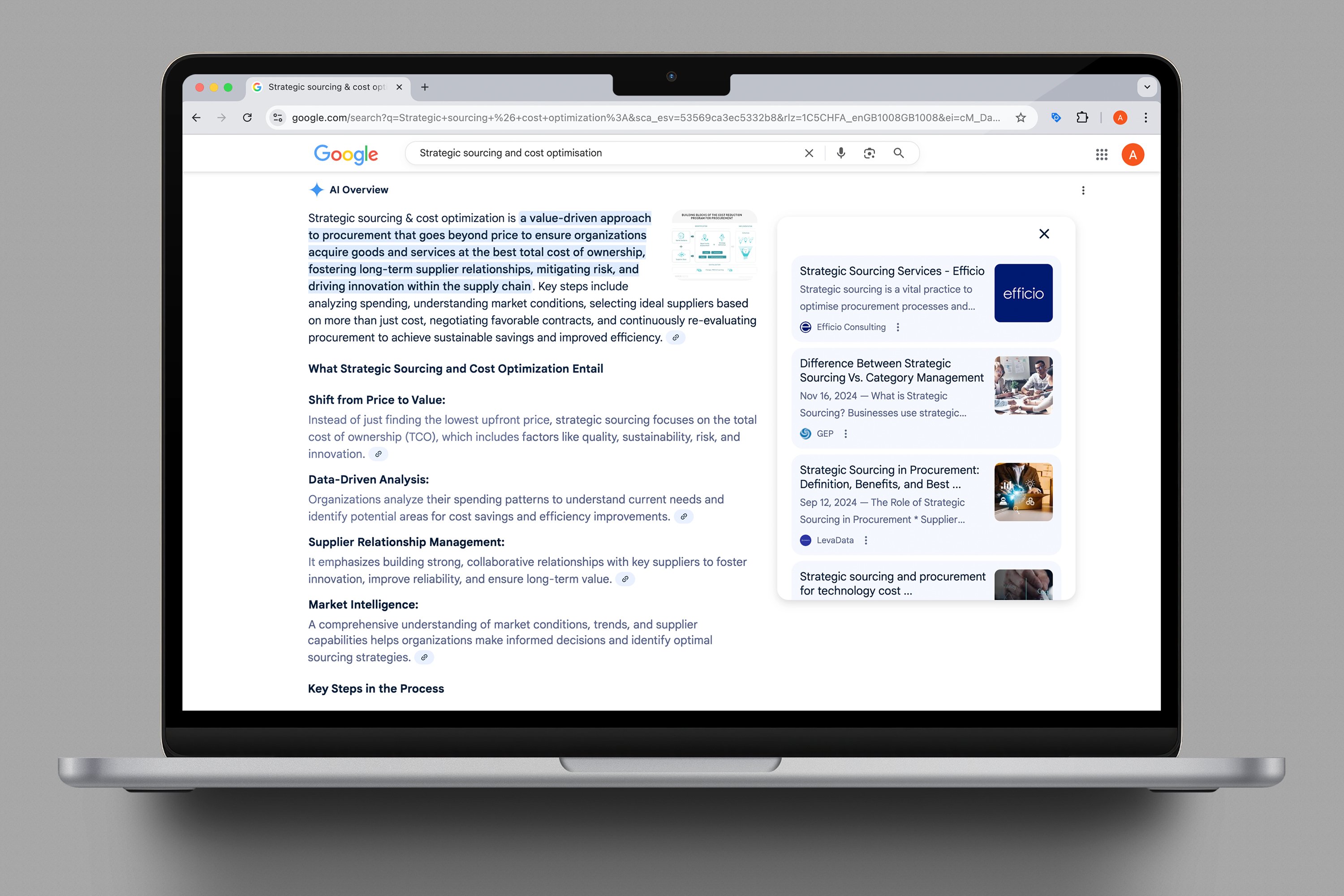Solution
We started by analysing the latest structured data guidelines alongside advice from the large LLMs, from schema.org through to Google’s best practice, to determine which signals would have the greatest impact for a multilingual professional services site like Efficio’s.
That groundwork led to a model with three layers of AI readiness, giving editors control to easily enrich content where it matters most:
Three layers of AI readiness
1. Template-level
We extended the website so that structured data is automatically applied across all core templates, without any extra effort from editors. These always-on signals ensure that every page, in every language, carries trusted, machine-readable data. For Efficio, this included People, Article, Service, and Event structured data, which directly highlight expertise and authority.
2. Content-level structured data
In addition to the template-level changes, we enhanced all editorially controlled content tools so that schema is automatically applied behind the scenes when they’re added to a page.
This now spans key content formats such as Video, Image, and Quotes, ensuring content is both discoverable and easy for AI systems and human audiences to interpret. The functionality draws on tagging and metadata already entered during publishing, so all new and existing content carries consistent, machine-readable authority signals.
3. Flexible structured data tools
Alongside the always-on template and content-level coverage, we developed a set of dedicated tools that let editors spotlight specific pieces of content, ensuring they’re marked up in the right format and schema context.
For example, if an article includes answers to key client questions, the FAQ plugin lets editors explicitly mark up those questions and answers. If it outlines a process, the How-To plugin captures the steps so machines can interpret it as a structured process. Testimonials can also be highlighted with the Testimonial plugin, ensuring proof points are citable by answer engines.
Because we want to optimise for both human and AI audiences, these tools can display content on the page or keep it hidden so it’s only exposed through markup. This flexibility means a service page can remain uncluttered for human readers, while behind the scenes it carries rich, citable FAQs for AI systems.
From solution to execution
With the new structured data tools live, Alberto and the team set about finding opportunities to enrich Efficio’s site with machine-readable signals, building on the always-on template and content-level enhancements.
They quickly identified innovative ways to use the new tools, including:
- Teaching AI what Efficio excels at by adding machine readable FAQs to service pages, linking their services to the questions prospects typically ask.
- Extending discoverability by repurposing high-value content as standalone, hidden FAQ pages designed specifically for AI.
- Clarifying processes for machines and readers by embedding How-To content within articles that describe a sequence of steps.
- Reinforcing authority by marking up client testimonials from case studies and reports, making proof points citable by answer engines.
- Ensuring global consistency by applying structured data across multiple languages so signals are discoverable worldwide.






